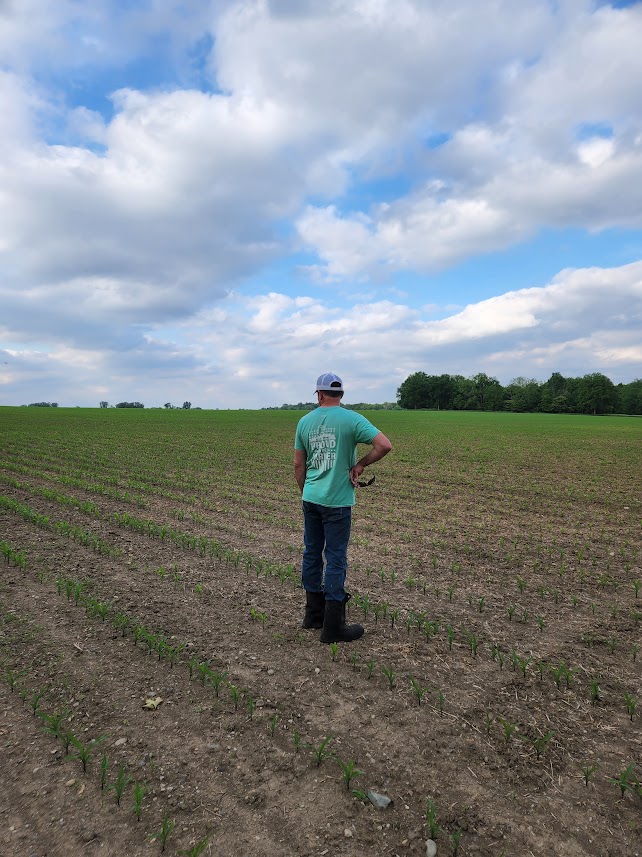You’ve been farming for awhile, and minus the years where the weather won’t cooperate, you know what you’re doing. Your crops are good, you’re getting good quantity and quality, and you’re able to make a profit. Does it make sense to keep researching, evaluating, and updating your input decisions?
When the four-minute mile was broken by Roger Bannister in 1954, people didn’t think anyone would ever be able to go faster, but his record was broken a month and a half later by John Landy. Earlier this year, Track and Field News announced it would no longer update the list of Americans to break four minutes, because there were already 63 men this year.
So the short answer is: yes. Research on crops never stops, and there are valid reasons for people to continue making our crops bigger, better, and more effective.
At AgroLiquid, we study a variety of crops in detail to determine the best fertilizer combinations. All of our fertilizer research is carefully documented, including what fertilizers we use, when, on what crops, and how those crops grow. Much of our research is conducted at our 1,000 acre research facility, the North Central Research Station (NCRS). We also partner with farmers, growers, and ranchers across the country to conduct fertilizer research in other climates and soil types. This helps us perfect our fertilizer programs, and develop the most efficient combinations for all types of crops.
Tailoring solutions to change
Our fields are in a constant state of flux, influenced by weather, soil health, pests, and everything else in the environment. As crop varieties change and improve, our research lets us tailor fertilizer programs and formulations to address changing dynamics. As we test all over North America, this also helps develop solutions for their specific regional conditions. Whether adapting to different precipitation patterns or developing blends for new issues, continuous research helps us all stay ahead of the curve.
New challenges
New challenges constantly arise in agriculture, ranging from pest and disease resistance to shifts in market demands. Research on inputs plays a role in developing solutions to help growers successfully manage these challenges. By staying aware of scientific advancements, farmers can adopt fertilization strategies to mitigate risks.
Maximizing resource efficiency
Research lets us fine-tune crop nutrition to maximize nutrient uptake by crops. This improves the economics and also reduces the potential for nutrient runoff. By optimizing nutrient use, growers can achieve higher yields with fewer inputs. So yes, the research leads to doing more with less.
Sound science
Ongoing research provides growers with the latest insights, so they can make decisions based on sound scientific principles. Whether it’s choosing the most suitable nutrient blend for a specific crop or adopting precision agriculture techniques, the knowledge gained from continuous research lets people make choices that align with their economic goals.
Here are some examples of recent research:
Ten Years of Permanent Plot Corn Research
The AgroLiquid crop nutrient program, as demonstrated through long-term research at the North Central Research Station, has proven to yield consistently higher results compared to conventional fertilizer programs in corn-soybean rotations. The longevity of this study is part of its value. AgroLiquid remains committed to trials throughout North America, as they allow researchers to make scientifically-based recommendations.
XtremeAg is very transparent with what they do on their farms, and will highlight products and practices that work – and not leave out the ones that don’t work. AgroLiquid has used this opportunity to test out-of-the-box ideas, push for high yields, and expand testing on crops we have little data on. This report contains all of the results for 2022 for each of the locations where testing was done.
Experimental Phosphorous Products in Corn
AgroLiquid is consistently looking for new opportunities to fill gaps in the fertilizer market. Phosphorus can be applied in many ways and is needed in both starter and slow-release forms. In this experiment, two experimental products: TDP-19 (a slow-release version) and UP-20 (a starter version), are tested against existing products, ProGerminator and springUP, to determine product efficacy differences.
Foliar Fertilizer Combinations in Soybeans
Potassium is one of the most important nutrients that can be supplied by foliar fertilizers. Phosphorus is another nutrient that may be beneficial when applied through foliar treatments. The objective of this trial was to evaluate combinations of fertiRain, Sure-K, and springuP applied at R2 growth stage of soybeans.
See all of our research.
AgroLiquid is your research partner
At AgroLiquid, our commitment to studying crops, optimizing fertilizer combinations, and conducting research makes sure growers receive tailored solutions for their specific conditions. We’re dedicated to this ongoing pursuit that helps farmers meet their goal for bigger and better yields, and greater profitability. Whether you’re running a (four-minute) race or you’re running a farm, it’s better to have the best research and training at your disposal.


